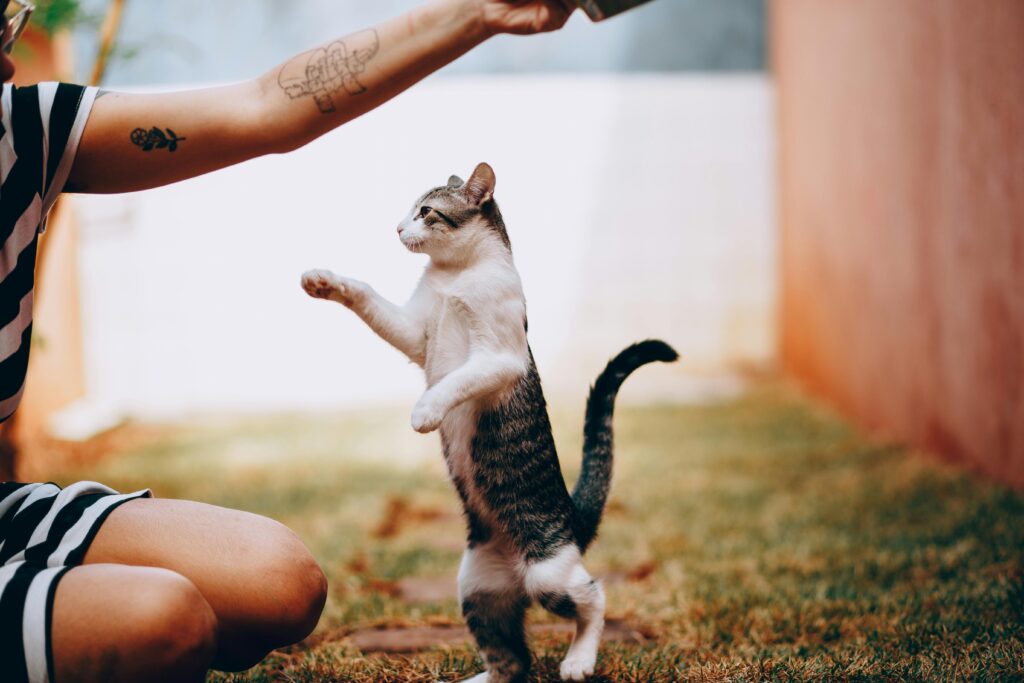Can You Train a Cat Like You Train a Dog? Potential and methods Issue explorer
Cat Vs Dog Behavior: Understanding The Differences
Understanding Cat & Dog Differences in Training Pets These contrasts also help know how to adapt your training style to your pet’s nature and natural behavior.
Cat Behavior vs Dog Behavior
These differences can play a part in their trainability. Dogs are pack animals that want to please their owners, which is why they are more receptive to training. They are instinctively obedient and looking for affirmation. Cats, in contrast, are more self-reliant and possess a significant degree of independence. Cats are driven by their own interests and are not always as responsive to commands as a dog.
Feline Instincts
Cats are instinctual creatures, hunting, scratching, and marking territory to name a few things they do. These behaviors are such instinctive behaviors that they can sometimes complicate training. Getting to know and utilizing these instincts is key to cat training success.
Canine Traits
One thing that stands out the most about dogs is that they are incredibly loyal, eager to learn and easily bonded with their owner. These characteristics make them easier to train and more responsive to commands and rewards.
Pet Training Differences
These animals are different from one another, and consequently, so are the methods that are used to train cats and dogs. Dogs respond to verbal cues, physical guidance and social reinforcements. Cats, on the other hand, might need a little bit more preparation, a lot more positive reinforcement, and playing on their instincts.
Understanding Pets
Knowing your pet’s personality, likes, and dislikes helps you train them better. With this in mind, you can devise a training plan that will be effective but also enjoyable for your pet.
WHAT IS YOUR TRAINING — CAN CATS BE TRAINED LIKE DOGS?
In contrast, whereas cats can also be taught to do all sorts of things if they’re trained if the owners have not time, while it is easier to train dogs. The trick is to tailor your behaviour to your cat’s individual personality and instincts.
Cat Training Basics
So today we are talking about cat training, which basically means teaching your cat to respond to commands, tricks, or desired behaviours. Using positive reinforcement, consistency, and patience, you can achieve this. Cats can have a mind of their own and may not always respond to verbal commands alone, such that a combination of techniques should be taken to achieve the desired results.
Cat Obedience Training
Cat obedience training involves teaching basic commands such as sit, stay, and come. The various distractors can be treats, toys, and positive reinforcement. Begin with easy commands and work your way up as your cat gets better at listening.
Pet Training Methods
Various methods are available for pet training, which can be used for training dogs as well as cats. Such as positive reinforcement, clicker training, and reward-based training. Consistency in your approach will help, so finding a method that works best for your pet is key.
How Cats and Dogs Learn

Fourth, cats and dogs learn differently, which influences the training. Dogs are also more eager to please and learn a variety of commands and tricks. Although cats can also be trained, they tend to be more responsive and more patient and creative in training.
Cat Training Tips: How to Train Your Cat
Cat Training is Different than Dog Training Here are some practical tips on how to train your cat:
Cats: The Straws of Positive Reinforcement

They consist of rewarding the cat for the desired behavior — also known as positive reinforcement. This can be accomplished with treats, toys, or affection. However, since you reward well-behaved cats, this will promote better behavior next time.
Clicker Training Cats
Cat training is the popular method of training cat with clicker. This means using a clicker to create a unique noise when your cat is doing something you want, and then rewarding them for the behavior. When training, the clicker encourages your feline friend to associate the sound with the favorable outcome.
Cat Training Techniques That Use Rewards
Treward-based training uses treats, toys, or love to reward your cat for good behavior. It works well for trick and command training, as well as for behavior shaping. Use highly valued rewards which are motivating for your cat.
Teaching Tricks to Cats
Cats can learn a plethora of tricks, including sitting, shaking, and jumping through hoops. Instead of scaring your feline friend with disciplinary techniques, employ positive reinforcement and reward-based training methods to teach your cat new tricks. Be gentle and consistent with yourself and celebrate little wins.
Evils Of Cat Training With Adhd Cat Training
Training a cat has challenges of its own. Here are some common problems and tips for tackling them:
Difficulties in Cat Training
Training cats is a more tough task than dogs; because of their independent nature and fierce instincts. You should be persistent and patient with your method and try to use positive reinforcement to promote positive behavior.
Patience in Pet Training
Real cat owners know — patience is the name of the game. Unlike dogs, cats might be unresponsive to signals or cues, and it may take them longer to respond to certain commands. Adapt, evolve, and reward yourself for the little victories!
Common Cat Behavioral Issues
This includes problems like scratching the furniture, being aggressive, or having difficulty with the litter box. Understand the root causes and use positive reinforcement to motivate the desired behaviors.
Navigating the Stubbornness of Cats
Cats are one of the most stubborn when it comes to training, and they will not always respond to training as you would expect. Encourage your cat to engage and participate in training using positive reinforcement, patience and understanding what it is that’s motivating them.
The Advantages of Teaching Your Cat: Why It Is Worth the Sacrifice

Training your cat offers several advantages that justify the time you will spend. Benefits of a trained cat are:
Advantages of Trained Cats
Cats that have been trained tend to be more well behaved and easier to manage. They’re less prone to undesired behaviors like scratching furniture or aggression. Training further solidifies the bond that you and your cat share, making your relationship that much more enjoyable!
Better Bonding With Pet
Training your cat helps build trust and communication also benefits your relationship. A cat with proper training are most likely to respond to your commands and act friendly towards you.
MIND STIMULATING FUN FOR CATS
Otherwise, cats don’t get much mental stimulation, which is necessary for their well-rounded wellness. It not only prevents boredom but avoids behavioral problems that can arise from not being engaged.
Training sessions for (7-15 minutes) blocks of 30-90 minutes(how often depends on the cat)
Training can add a mental and physical dimension to your cat’s lifestyle. It also allows them the security and comfort of their own environment.
Conclusion:
Learn How to Train Your Cat for Better Behaviour
This article will go into what makes training such a rewarding experience and how training can improve your pet’s life while also improving your bond. You can train your cat successfully by having an understanding of the differences between cat behavior and dog behavior, using effective training techniques, and being patient and consistent.
Training your cat has plenty of benefits, and is very well worth the time invested. Proper training techniques can help you unleash your cat’s potential, leading to a happier cat and a pet with better behavior.
Yuns Legdm is a passionate advocate for pet care and the founder of this website, dedicated to providing valuable information for fellow pet lovers and veterinary professionals worldwide. With a deep love for animals, Yuns created this platform to connect passionate pet owners with expert insights from veterinarians around the globe.
This website grows with you—the passionate pet owners and veterinary experts—creating a trusted space where knowledge, experience, and love for animals come together. Whether you’re seeking advice on pet health, nutrition, or general well-being, this platform is here to support you on your journey of responsible and loving pet care.





